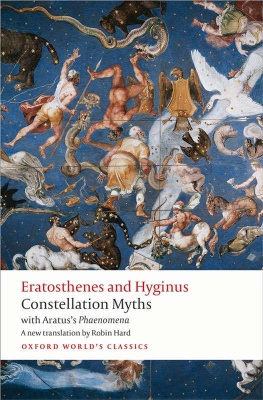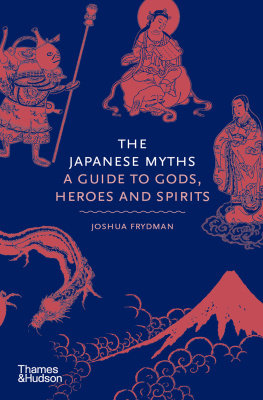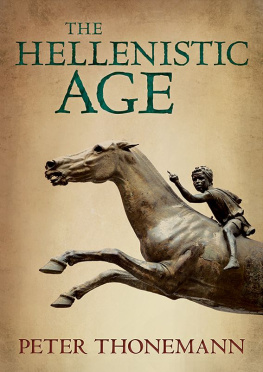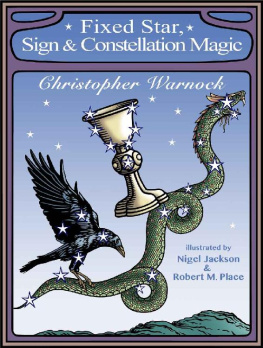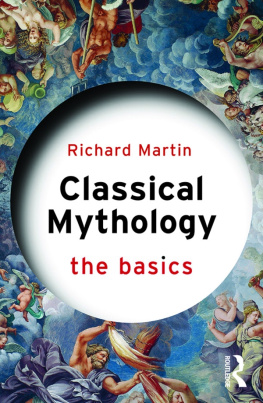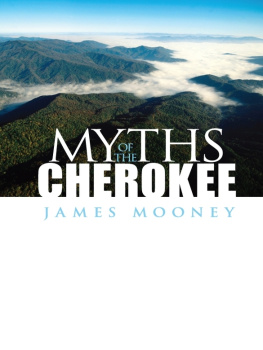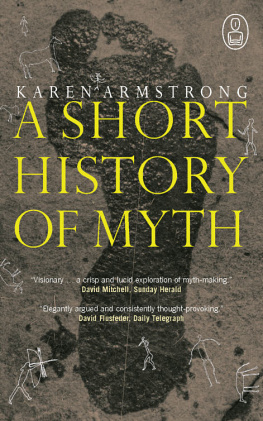OXFORD WORLDS CLASSICS
CONSTELLATION MYTHS
ERATOSTHENES of Cyrene (c.285c.194 BC) was a leading scholar, scientist, and poet of the Hellenistic era, who became the third director of the great library at Alexandria, and achieved notable distinction as a geographer. He compiled a comprehensive handbook of astral mythology, the Catasterisms, by collecting constellation myths from the previous tradition, altering and improving them as he thought fit, and devising new myths where it was necessary or desirable. This genre of myth, in which stories were put forward to explain how persons, creatures, and things had come to be set in the sky as constellations, was developed at a relatively late period, mainly from the fifth century onward, and the canon became largely fixed after Eratosthenes established his synthesis in the third century. Although his compendium has not survived, much is recorded of its contents in the later summaries translated in this volume, and it was the main source, directly or indirectly, for the astral myths recounted by Hyginus.
GAIUS JULIUS HYGINUS (c.64 BCAD 17) was appointed by Augustus to be director of the Palatine library, and a prolific author who wrote about a wide variety of subjects. Two surviving works are ascribed to him, the Fabulae, a collection of tales from Greek myth, and the Astronomy, an elementary guide to astronomy which contains the fullest surviving collection of constellation myths. Whether or not the Astronomy was actually written by Hyginus, it is invaluable for what it records of the astral myths in the Eratosthenian tradition.
ARATUS of SOLOI (c.310c.240 BC) was born in Asia Minor, studied at Athens under the Stoic philosopher Zeno, among others, and received an invitation in 276 to come to the Macedonian court, where he wrote his astronomical poem, the Phaenomena, which is his only surviving work. It contains, among other things, a full account of the Greek picture of the sky, in which all the constellations are described in due succession.
ROBIN HARD has translated Apollodorus, Library of Greek Mythology, Diogenes the Cynic, Sayings and Anecdotes, Marcus Aurelius, Meditations, and Epictetus, Discourses, Fragments, Handbook for Oxford Worlds Classics. He is the author of The Routledge Handbook of Greek Mythology.
OXFORD WORLDS CLASSICS
For over 100 years Oxford Worlds Classics have brought readers closer to the worlds great literature. Now with over 700 titlesfrom the 4,000-year-old myths of Mesopotamia to the twentieth centurys greatest novelsthe series makes available lesser-known as well as celebrated writing.
The pocket-sized hardbacks of the early years contained introductions by Virginia Woolf, T. S. Eliot, Graham Greene, and other literary figures which enriched the experience of reading. Today the series is recognized for its fine scholarship and reliability in texts that span world literature, drama and poetry, religion, philosophy, and politics. Each edition includes perceptive commentary and essential background information to meet the changing needs of readers.
OXFORD WORLDS CLASSICS

ERATOSTHENES and HYGINUS
Constellation Myths
with
Aratuss Phaenomena

Translated with an Introduction and Notes by
ROBIN HARD


Great Clarendon Street, Oxford, OX2 6DP
United Kingdom
Oxford University Press is a department of the University of Oxford. It furthers the Universitys objective of excellence in research, scholarship, and education by publishing worldwide. Oxford is a registered trade mark of Oxford University Press in the UK and in certain other countries
Robin Hard 2015
The moral rights of the author have been asserted
First published as an Oxford Worlds Classics paperback 2015
Impression: 1
All rights reserved. No part of this publication may be reproduced, stored in a retrieval system, or transmitted, in any form or by any means, without the prior permission in writing of Oxford University Press, or as expressly permitted by law, by licence or under terms agreed with the appropriate reprographics rights organization. Enquiries concerning reproduction outside the scope of the above should be sent to the Rights Department, Oxford University Press, at the address above
You must not circulate this work in any other form and you must impose this same condition on any acquirer
Published in the United States of America by Oxford University Press 198 Madison Avenue, New York, NY 10016, United States of America
British Library Cataloguing in Publication Data
Data available
Library of Congress Control Number: 2014954273
ISBN 9780191026539
Printed in Great Britain by
Clays Ltd, St Ives plc
Contents
THE night sky is an alien environment, filled with countless points of light set in no kind of order. It is rare for any group of stars to form any obvious pattern which might encourage people to think that they are looking at a plough or wagon, perhaps, or a cross or crown. In spite of this, a natural tendency has always existed for human beings to try to domesticate the sky by identifying groups of stars with earthly things, even if that task often requires some effort of the imagination. It is not essential that the group should form a unified imagea star-cluster like the Pleiades might be thought to be a cluster of nymphs, maidens, or animalsbut larger patterns of stars are fancied to form a picture, or forced into some kind of picture. Homer refers to our Plough not only as the Wagon, but also as the Bear, although the latter resemblance is far from obvious; and he identifies a gigantic figure further south as being Orion, a mighty hunter from Greek legend. This process of identification starts through a spontaneous impulse of the imagination, in relation to stars and asterisms which are of practical use to farmers or navigators, or to groups of stars which bear a more or less obvious resemblance to what they are supposed to represent; but the process is extended as a result of deliberate effort, as astronomers set to work to map out the sky in its entirety through methodical observation. By the fourth century BC, the sky was pictured as being filled throughout with constellations, some forty-six in number. The figures represented either persons, or creatures, or else things of varied nature, ranging from an arrow to a ship or river. Almost all were given names that assigned them to general categories, as opposed to proper names, and by and large, these constellations did not inherently have any closer connection with the world of myth than the modern ones created since the Renaissance. Our Hercules was known as yet merely as the Kneeler, and our Pegasus merely as the Horse. Another constellation whose name was rendered more definite as a result of later myth-making is the Swan, which was originally just the Bird.
Only five of the constellations that represent persons had personal names from the very beginning, namely the constellation Orion, which was known as such to Homer and Hesiod, and four that illustrate the famous myth in which Perseus rescued Andromeda from a sea-monster. The latter group is exceptional because the myth itself inspired the invention of the whole group of constellations, evidently by a single person at a relatively late period, probably in the fifth century. Otherwise the ship in the heavens was apparently identified as Jasons
Next page
